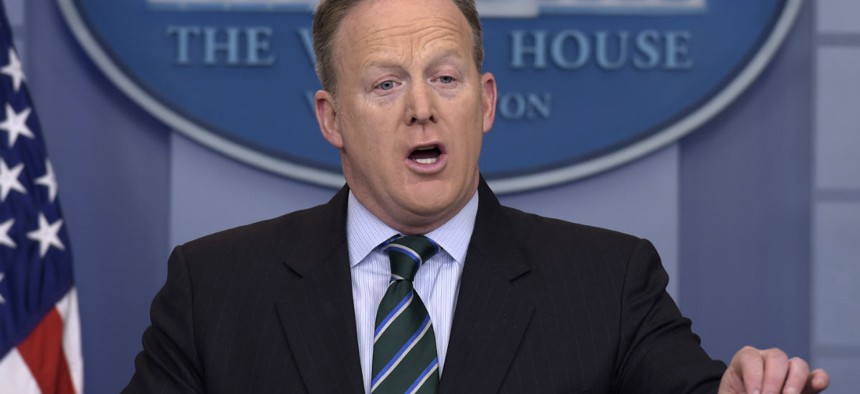White House Throws Weight Behind Cutting Feds’ Retirement, Health Benefits
Federal employees’ compensation package is "antiquated" and "unsustainable," spokesman says.
President Donald Trump this week threw his support behind dramatic changes to federal employees’ retirement and health benefits, calling the current system “unsustainable.”
Feds’ benefits are overly generous and antiquated, White House Press Secretary Sean Spicer said in a statement when announcing the governmentwide hiring freeze. The administration’s criticism of federal employees’ compensation package comes after Republicans in Congress have highlighted the issue as a top priority for legislative reform in the 115th Congress.
“Federal employee health and retirement benefits continue to be based on antiquated assumptions and require a level of generosity long since abandoned by most of the private sector,” Spicer said. “Those costs are unsustainable for the federal government, just as they are proving to be unsustainable for state and local governments with similar health and retirement packages.”
The White House's apparent call for change came as it announced the moratorium on hiring, saying the freeze was necessary to control costs relating to federal personnel. Spicer noted executive branch civilian employment grew by 17 percent from fiscal 2000 to fiscal 2014. In the larger picture, federal employment remains smaller than it was in most years since 1966. The latter years of the Clinton administration brought upon a rare period in which civilian, non-postal employment dipped below 2 million. Across the entire executive branch, civilian federal employment remains at its smallest rate than at virtually any point over the last 50 years.
Trump’s order gave the directors of the Office of Management and Budget and Office of Personnel Management until April 22 to come up with a long-term plan to cut the federal workforce through attrition.
Decreases in feds’ benefits will likely come through Congress; House Oversight and Government Reform Chairman Jason Chaffetz, R-Utah, has promised sweeping reforms in this area.
On the retirement issue, Chaffetz said his committee will push to move new federal hires to only a defined-contribution benefit, like the Thrift Savings Plan. He said he must “still work the math” as to whether those employees would receive a more generous government contribution toward the 401(k) equivalent to make up for the loss of a pension, but did promise a “healthy” match from agencies. Chaffetz said he would protect employees already vested in their pensions, saying he did not want to “unduly scare” an employee already on the job for seven years and it would be “difficult” to go after existing workers’ retirements.
Chaffetz also said his committee is considering ways to shrink the size of the federal workforce. Republicans are “looking at” legislation to require two or three federal employees to leave before agencies could hire one new worker. He vowed to avoid the “fallacy of the past” in which reductions in the federal workforce simply led to more contracted work.
“There are a lot of good, quality workers,” Chaffetz said, “but there are too many of them.”








